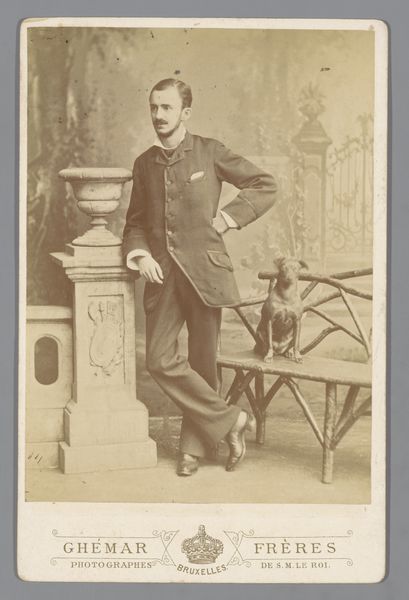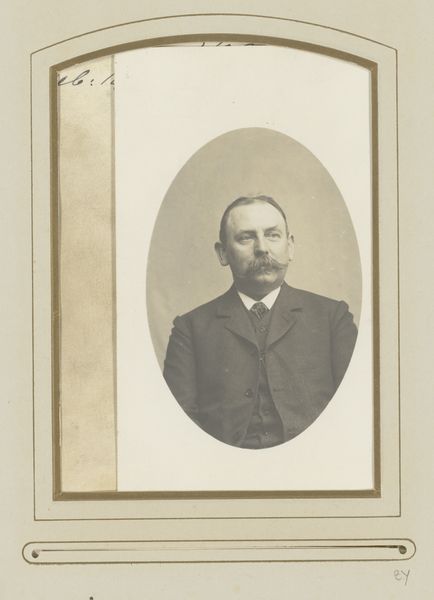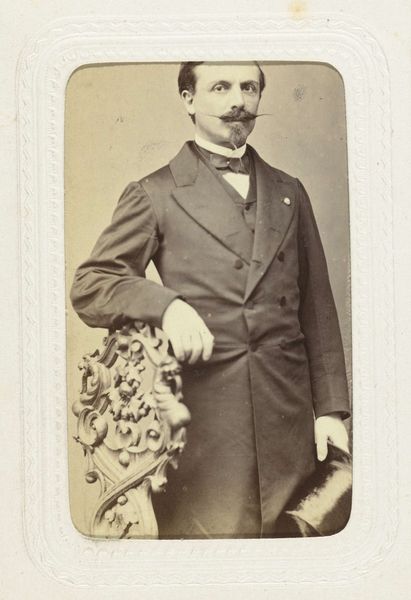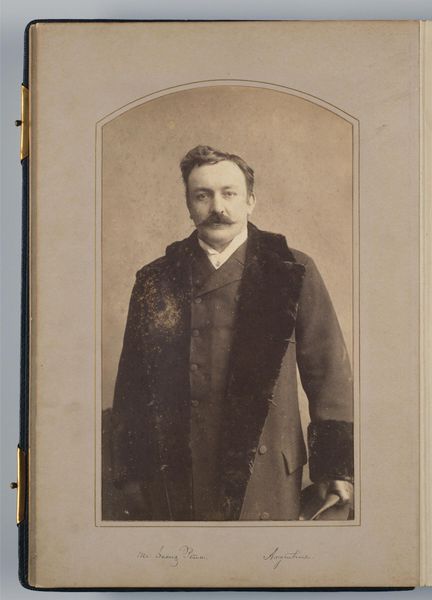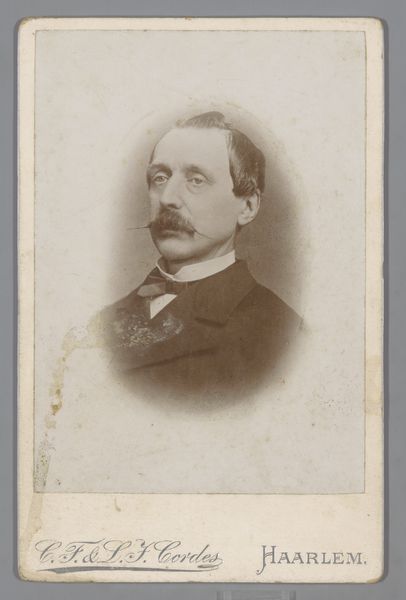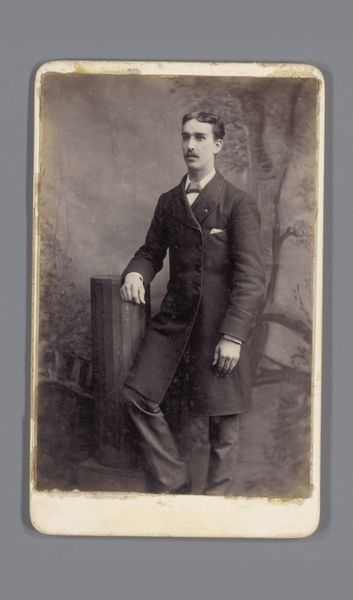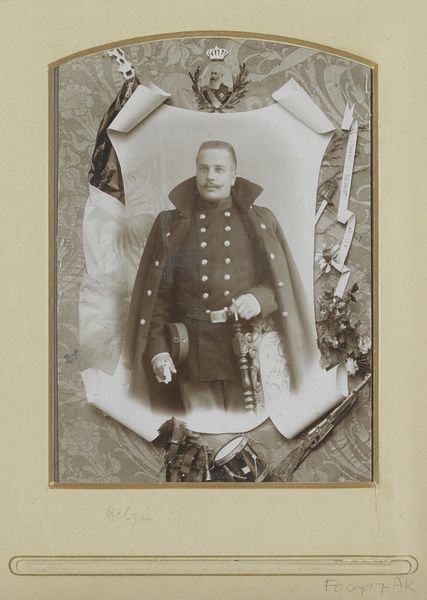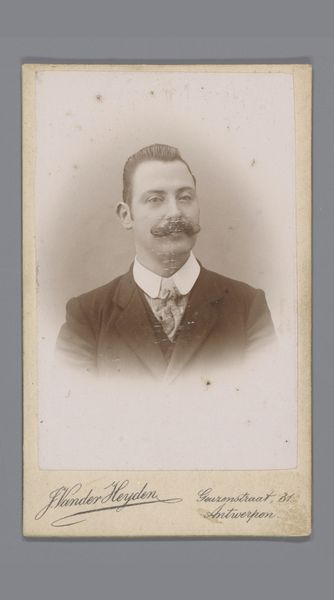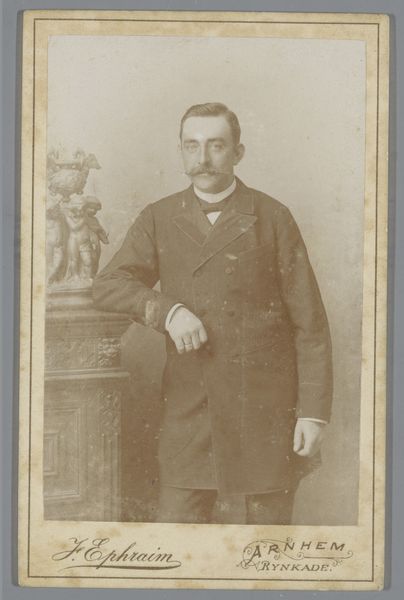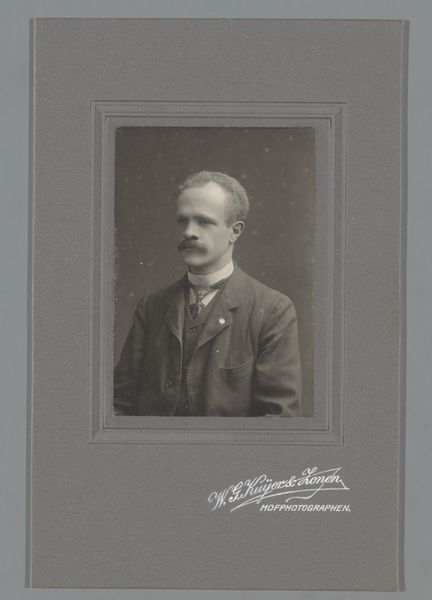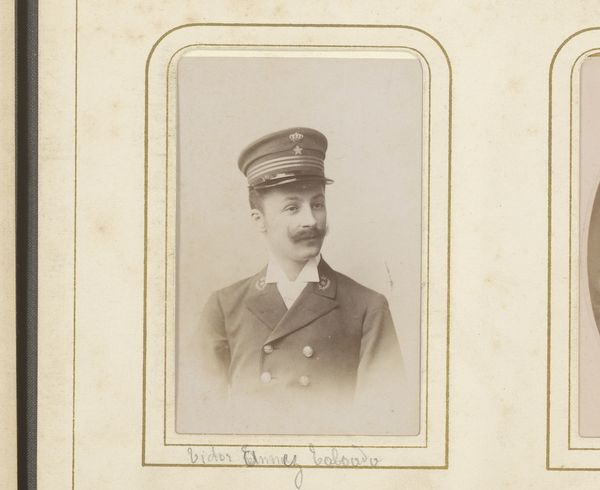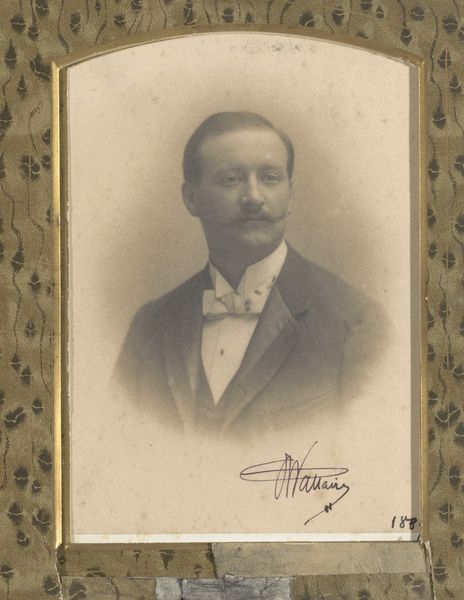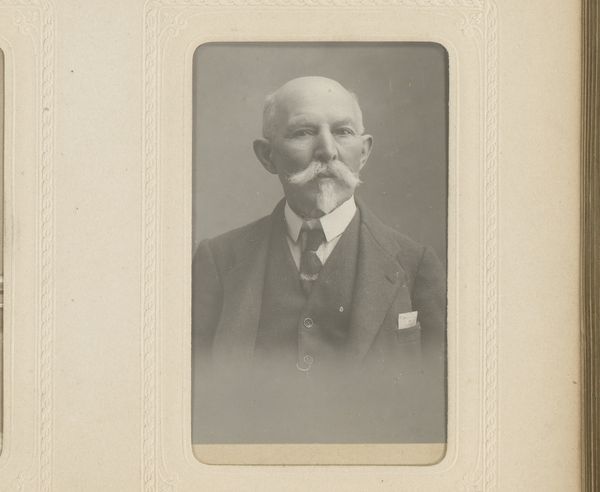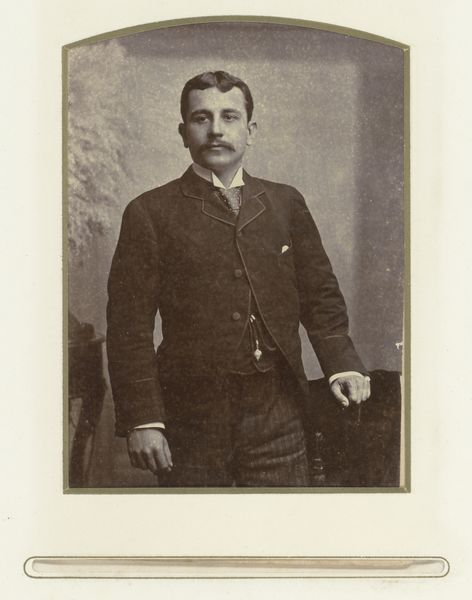
photography
#
portrait
#
photography
#
realism
Dimensions: height 190 mm, width 127 mm, depth 13 mm
Copyright: Rijks Museum: Open Domain
Editor: Here we have "Portret van een onbekende man met bril op revers gespeld," or "Portrait of an unknown man with glasses pinned to his lapel," a photograph taken by J. Indursky sometime between 1896 and 1920. The sitter has such a controlled presence and the framing is very formal; what details stand out to you? Curator: Certainly, the interplay of light and shadow defines the visual hierarchy. Note how the photographer employs a restricted tonal palette, largely shades of grey, drawing our attention to the sitter's face. It has a certain symmetry, offset subtly by the gentleman's off-center part and the slight turn of his head. Editor: And the pin? Is that a flower? Curator: Indeed, but consider the overall structure: the dark suit creates a broad, stable base. This triangular form directs the gaze upward, culminating in the detail of the man's face and the subtle highlights on his mustache. The slight tilt and gesture imply movement, suggesting an invitation. Editor: So, it's not just a static representation but a dynamic interaction achieved through carefully controlled formal elements? Curator: Precisely. One may argue that it is precisely through these formal choices – the restricted palette, the subtle asymmetries, the calculated use of light – that Indursky manages to convey a sense of quiet dignity. Did you note the tension between the sitter's softened fist and his stoic expression? Editor: I see now. The interplay between stillness and subtle dynamism creates a compelling sense of psychological depth through formal arrangements. Thank you! Curator: The pleasure is mine. Hopefully this has illuminated the photographer's deliberate strategy and provided you tools for decoding similar photographic portraits.
Comments
No comments
Be the first to comment and join the conversation on the ultimate creative platform.
